Learn about Mamre's intriguing role in biblical history and his mysterious connection to Abraham, sparking curiosity for further exploration.

Who Is Mamre in the Bible
Have you ever stumbled upon a name in the Bible and wondered about its significance? Mamre might be one of those names for you.
As you explore the ancient texts, you'll find Mamre closely linked to Abraham, serving not only as a person but also as a place of profound biblical events.
This mysterious figure and his connection to the Oak Grove of Mamre raise intriguing questions about his role and significance in biblical narratives and Jewish tradition.
Unraveling the layers around Mamre's identity and legacy offers a fascinating glimpse into the tapestry of biblical history, leaving you curious about the depth of stories woven into the fabric of faith.
Key Takeaways
- Mamre, associated with Abraham, symbolizes loyalty and shared values in biblical narratives.
- Located near Hebron, Mamre is significant for its historical and geographical context in the Judean hills.
- The Oak Grove at Mamre represents a site of divine-human interaction and spiritual significance.
- Mamre's legacy continues to influence religious, historical, and cultural discussions today.
The Identity of Mamre
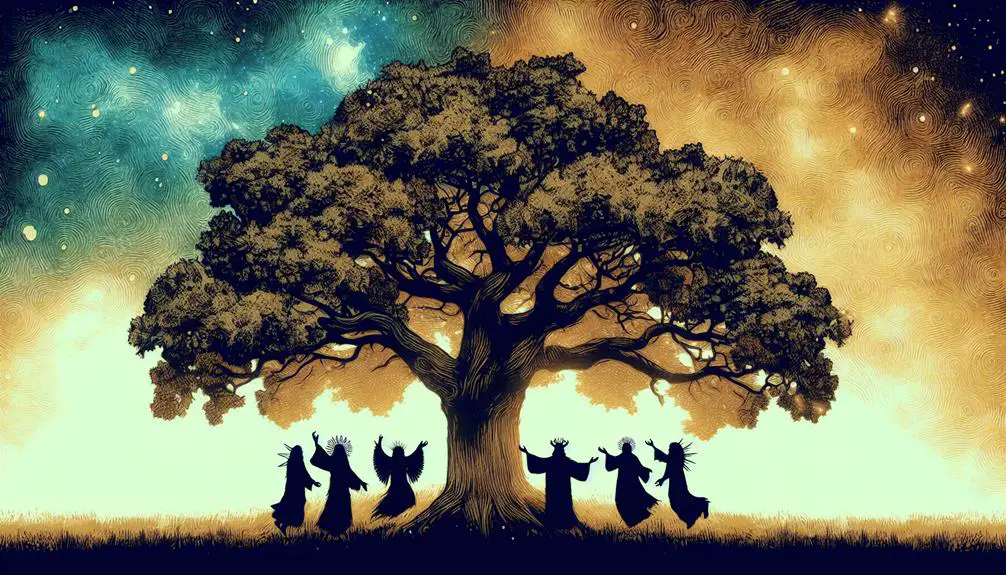
Mamre frequently appears in biblical texts as a significant locale, often associated with pivotal events and figures in the Genesis narrative. You might wonder about Mamre's origin and its geographic location, which are central to understanding its role in these ancient stories. Delving into Mamre's identity requires a close examination of both its etymological roots and its physical setting within the ancient Near East.
The term 'Mamre' is thought to derive from Amorite roots, suggesting a connection to the Amorite tribes of the early second millennium BCE. This origin hints at Mamre's significance not just as a place but possibly as a symbol of the cultural and social milieus of its time. However, the specifics of Mamre's origin remain a subject of scholarly debate, with interpretations varying based on linguistic and archaeological evidence.
Geographically, Mamre is located near Hebron, in the southern part of the Judean hills. This area was a strategic and fertile region, which would have made it an attractive location for settlement and religious observance in ancient times. Its proximity to major ancient trade routes would have further enhanced its importance, situating Mamre at a crossroads of cultures, peoples, and ideas.
Understanding Mamre's origin and geographic location sheds light on its significance within the biblical narrative and the broader context of the ancient Near East. This analysis helps you appreciate the layers of meaning and historical resonance that locations like Mamre contribute to the biblical texts, beyond their appearances in specific stories.
Mamre's Connection to Abraham
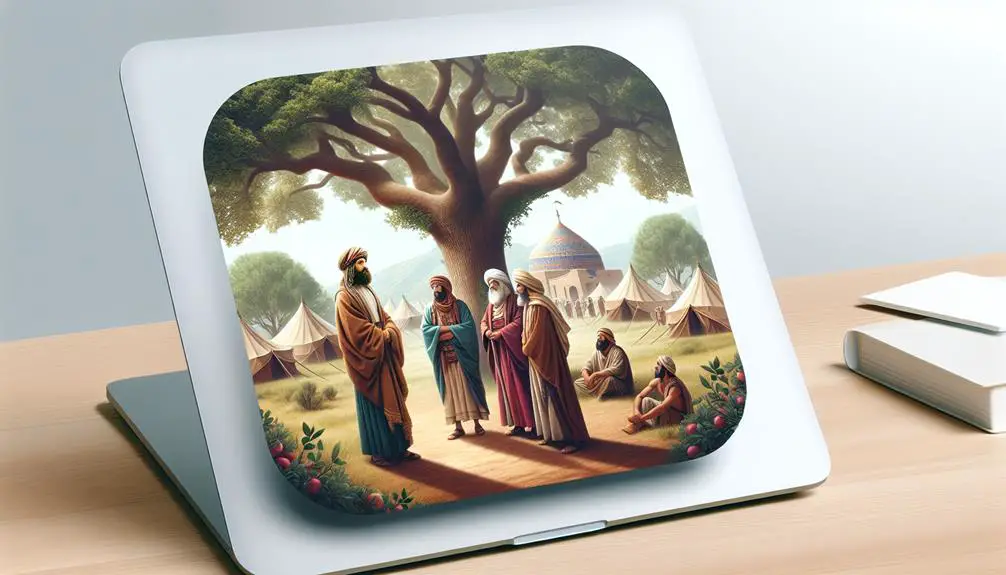
One can't discuss the significance of Mamre without delving into its profound connection to Abraham, a pivotal figure in biblical history. The narrative of Mamre's relationship with Abraham is embedded in the broader tapestry of ancient biblical lore, offering insights into the social and familial bonds that shaped the era. Mamre's lineage, a detail of considerable interest, plays a crucial role in understanding the dynamics of this connection. As a member of the Amorite tribe, Mamre's alliance with Abraham wasn't merely incidental but was rooted in shared values and mutual respect, a testament to the intricate social networks of the time.
Abraham's loyalty to Mamre, conversely, illuminates the depth of their bond. This loyalty wasn't a superficial allegiance but a profound commitment, reflective of the era's emphasis on covenant relationships. Abraham's willingness to engage in battle to rescue Lot, as detailed in Genesis 14, underlines the strength of his alliance with Mamre and his brothers, Eshcol and Aner. This episode not only highlights Abraham's martial prowess but also his unwavering commitment to his allies, a theme that resonates throughout his biblical narrative.
The connection between Mamre and Abraham, therefore, is emblematic of the complex web of familial, social, and political relationships that characterized the ancient Near East. It's a relationship that transcends mere acquaintance, embodying the principles of loyalty, mutual respect, and shared destiny. Through the lens of Mamre's lineage and Abraham's loyalty, one gains a deeper appreciation of the values that underpinned these ancient societies.
The Oak Grove of Mamre

Exploring the bond between Abraham and Mamre naturally leads us to examine the Oak Grove of Mamre, a site of significant historical and religious importance. This grove, more than just a geographical location, represents a nexus where faith, history, and environmental conservation intersect. Through tree preservation efforts and archaeological findings, the Oak Grove of Mamre provides a tangible connection to the past, offering insights into the life and times of biblical figures.
Tree preservation at the site hasn't only been crucial for maintaining its historical integrity but also for environmental conservation. The ancient trees are seen as living monuments, directly linking today's visitors with the biblical era. Efforts to preserve these trees underscore the importance of environmental stewardship as an integral part of preserving cultural and religious heritage.
Archaeological findings have further underscored the significance of the Oak Grove of Mamre. These findings include:
- Artifacts that suggest the grove was a place of assembly and worship.
- Structures that hint at the grove's role as a landmark in ancient trade routes.
- Inscriptions that provide clues about the religious practices and beliefs of the time.
These elements combine to paint a comprehensive picture of the Oak Grove of Mamre's role in ancient society. They show that the site wasn't only of religious importance but also a hub of social and economic activity. Through scholarly analysis, the Oak Grove of Mamre emerges as a key location for understanding the intersection of faith, culture, and environmental preservation in the ancient world.
Biblical References to Mamre
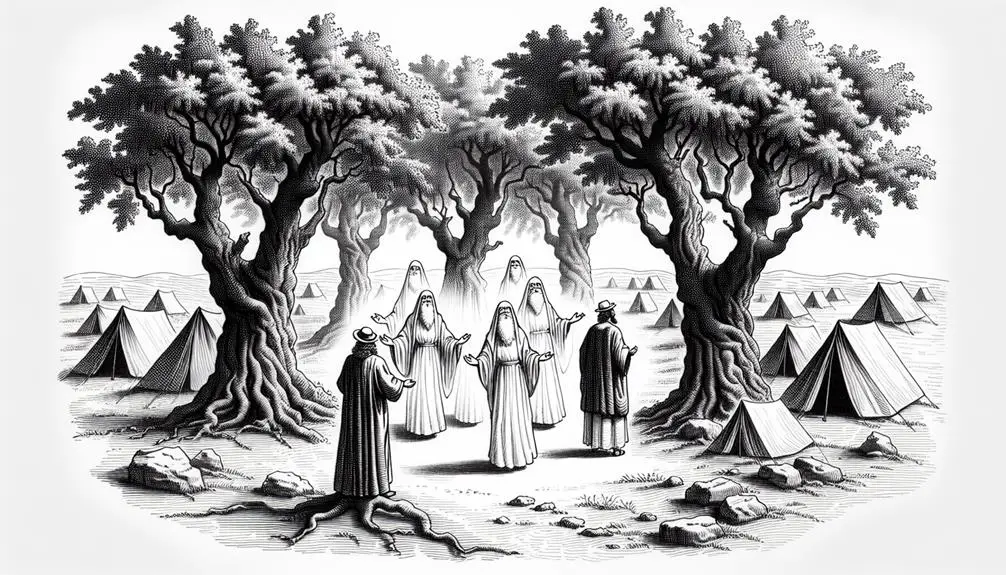
The Bible's narrative reveals Mamre as a place of pivotal encounters, where Abraham's story intertwines with divine promises and actions. This site, often associated with specific geographical markers, has been a subject of considerable interest, both biblically and archaeologically.
Mamre's location, near Hebron, is significant in the biblical landscape, serving as the backdrop for several key events. Archaeological findings have attempted to pinpoint the exact site, though interpretations vary. These discoveries provide a tangible connection to the narratives, offering insights into the historical and cultural context of the time.
Reference |
Description |
Significance |
|---|---|---|
Genesis 13:18 |
Abraham settles near the great trees of Mamre. |
Indicates Mamre's importance as a dwelling place. |
Genesis 18:1 |
The LORD appears to Abraham by the oaks of Mamre. |
Site of divine revelation and promise. |
Genesis 23:17 |
Mamre is mentioned in the context of the Hittite field Abraham purchases. |
Highlights its significance in legal and social terms. |
Genesis 35:27 |
Jacob visits Isaac at Mamre. |
Connects Mamre to the patriarchal lineage, underscoring its enduring legacy. |
Analyzing these references allows you to understand Mamre not just as a physical location, but as a symbol of faith, promise, and legacy within the biblical narrative. The intertwining of historical events, divine encounters, and archaeological evidence paints a comprehensive picture of Mamre's role in the biblical story, offering a richer understanding of its significance.
Mamre in Jewish Tradition

Within Jewish tradition, Mamre's historical significance extends beyond its biblical narrative to encapsulate a rich tapestry of cultural and religious interpretations.
You'll find that scholars frequently analyze Mamre's spiritual implications, suggesting that this site transcends its physical location to embody deeper theological themes.
This exploration allows for a comprehensive understanding of Mamre's enduring legacy in Jewish thought and practice.
Mamre's Historical Significance
Mamre's historical significance in Jewish tradition is deeply rooted in its biblical associations, serving as a pivotal location where key patriarchal narratives unfolded. This site isn't just a mere geographical location mentioned in passing; it's a cornerstone for understanding the unfolding of biblical history and the patriarchs' lives.
Key points to consider include:
- Geographical location – Mamre is strategically situated in the Judean hills, linking it to numerous biblical events and figures.
- Archaeological evidence – Excavations in the area have unearthed artifacts that corroborate the site's historical and cultural significance in ancient times.
- Historical narratives – Textual analysis reveals Mamre's central role in narratives involving Abraham, making it a focal point for Jewish historical and religious study.
Spiritual Interpretations of Mamre
Exploring the spiritual interpretations of Mamre reveals its profound significance in Jewish tradition, serving as a symbolic nexus for divine-human interaction and theological reflection. Mamre's symbolism is deeply rooted in the narratives of Divine encounters, symbolizing a space where the sacred and the mundane converge.
This place isn't merely a geographical location but a theological concept, embodying the potential for direct communication between the Divine and humanity. Through Mamre, Jewish tradition emphasizes the accessibility of God to His people, suggesting that the Divine presence isn't confined to the temple but can manifest in any place where faith and devotion reside.
This interpretation enriches our understanding of Mamre, highlighting its role as a conduit for spiritual insights and divine revelation.
The Legacy of Mamre Today

The legacy of Mamre today continues to resonate, contributing significantly to religious, historical, and cultural discussions. This figure, rooted deeply in the biblical narrative, now extends its influence into various contemporary arenas. One of the most visible manifestations of Mamre's enduring legacy is observed in the field of Mamre tourism and genealogical research.
Mamre tourism has seen a notable surge, with religious pilgrims and history enthusiasts flocking to the ancient site associated with Mamre. This influx isn't merely a pursuit of spiritual fulfillment but also an exploration of the tangible connections to a biblical past. The area serves as a vivid historical canvas, allowing visitors to immerse themselves in the world that once surrounded Mamre and his contemporaries.
Genealogical research, on the other hand, offers a more introspective avenue for engaging with Mamre's legacy. Individuals and scholars alike delve into ancient genealogies, seeking connections or deeper understanding of the biblical figure's lineage. This pursuit underscores the importance of Mamre not just as a historical figure but as a point of connection for many exploring their religious and familial roots.
The impact of Mamre's legacy is multifaceted, encapsulating:
- A religious significance that continues to inspire faith communities around the world.
- A historical intrigue that draws scholars and enthusiasts to the ancient landscapes associated with Mamre.
- A cultural resonance that influences art, literature, and theological discourse.
Through Mamre tourism and genealogical research, his legacy isn't only preserved but actively explored and reinterpreted in the modern era, underscoring the timeless relevance of biblical figures in contemporary society.
Frequently Asked Questions
How Does Mamre Compare to Other Biblical Figures in Terms of Influence and Recognition?
When comparing Mamre to other biblical figures, you'll find his influence and recognition aren't as prominent. Unlike major prophets or kings, Mamre's lineage and the Covenant's significance offer a more nuanced, yet critical, perspective in the narrative.
His role, while not as widely celebrated, provides essential context to key biblical events, demonstrating that less recognized figures can also hold substantial importance in shaping the broader theological and historical landscape.
What Are the Archaeological Findings Related to Mamre, and How Do They Contribute to Our Understanding of the Historical Context?
Archaeological advancements and astute application of excavation techniques have unearthed cultural artifacts at Mamre, offering insights into the historical context of this site.
These findings, from pottery to inscriptions, not only validate biblical narratives but also reveal the rich tapestry of daily life in ancient times.
Your understanding deepens as you analyze how these artifacts, through their form and function, reflect the societal and religious practices of their era.
Are There Any Notable Artistic Representations of Mamre in Christian or Jewish Art, and What Do They Signify?
You'll find that artistic representations of Mamre in Christian and Jewish art aren't just decorative. They're steeped in artistic symbolism and cultural depictions that offer a deeper insight into religious narratives.
These works often transcend mere representation, embodying theological concepts and historical perspectives. By analyzing these pieces, you're delving into how cultures visually interpret sacred stories, making the imagery a crucial part of understanding the broader religious and historical context.
How Has the Interpretation of Mamre's Role Evolved in Biblical Scholarship Over the Centuries?
You're diving into a time machine, exploring how Mamre's symbolism and role have shifted in biblical scholarship.
Initially, perhaps seen as a minor figure, Mamre's significance has grown through theological debates, morphing from a background character to a symbol with deeper spiritual or historical layers.
Scholars have re-evaluated his contributions, highlighting how interpretations evolve. This journey through centuries showcases the dynamic nature of scriptural analysis, where context and perspectives refresh understanding.
What Are the Implications of Mamre's Story for Modern Spiritual Practices or Beliefs Within Contemporary Religious Communities?
You might find that the story influences modern spiritual practices through its emphasis on spiritual mentorship and community solidarity.
It encourages you to seek guidance from those more experienced in your faith, fostering a deeper sense of belonging and support within your religious community.
This interpretation can enrich your spiritual journey, offering new perspectives on how to live out your beliefs in a connected, supportive environment, thus enhancing both personal and communal faith experiences.
Conclusion
In conclusion, Mamre holds a significant place in biblical narratives and Jewish tradition, serving as both a person and a location closely tied to Abraham. This dual identity underscores Mamre's lasting impact on religious and cultural heritage.
Consider the Oak Grove of Mamre; this site not only symbolizes ancient encounters but also continues to inspire faith and scholarly interest today.
Analyzing Mamre's role reveals the intricate blend of historical, religious, and cultural layers that define much of the biblical landscape.

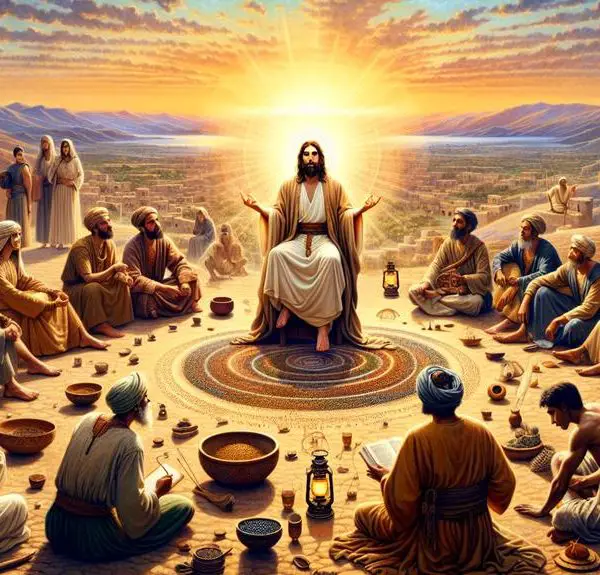
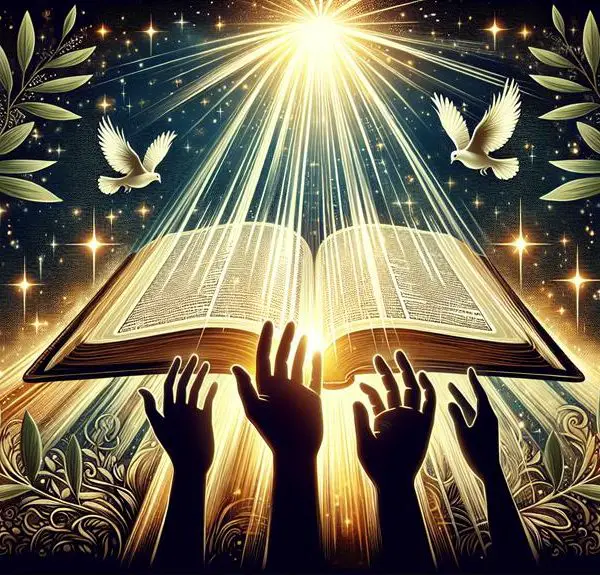
Sign up